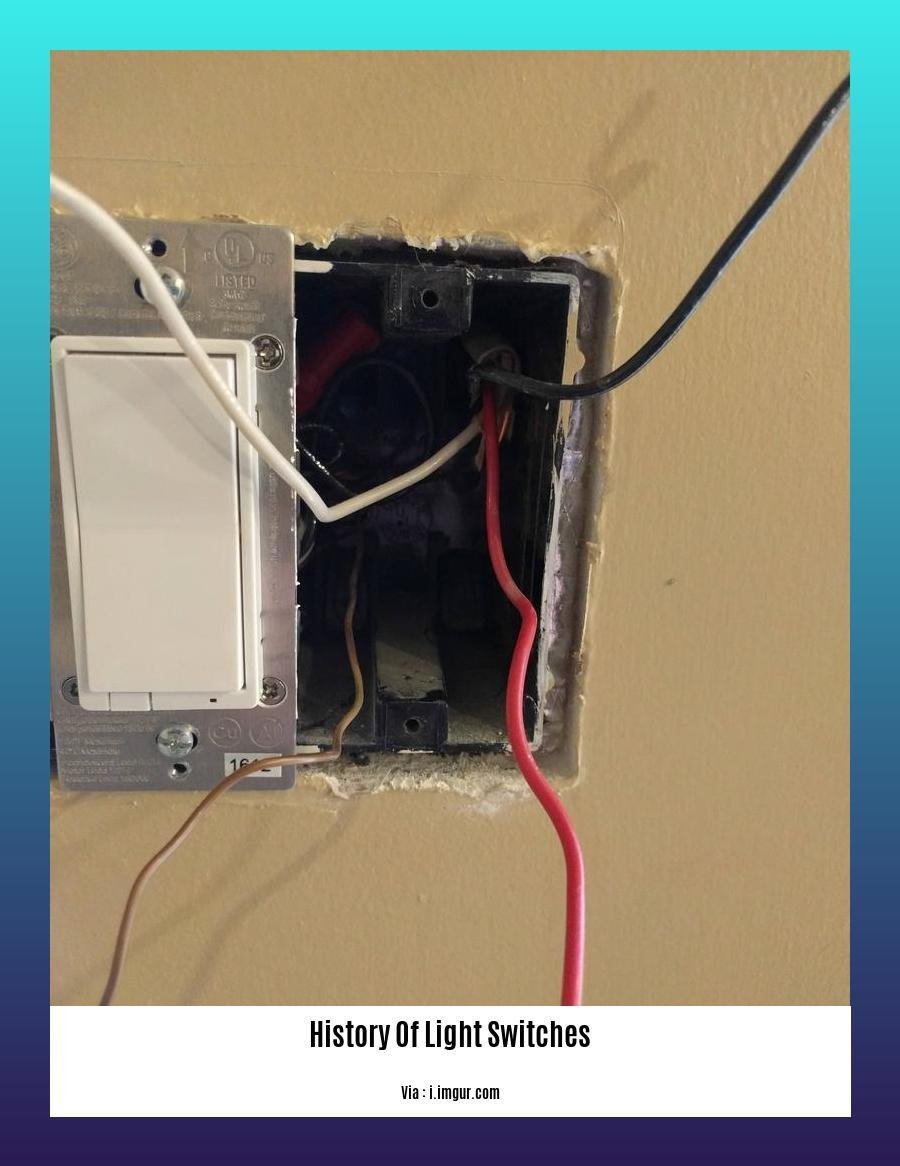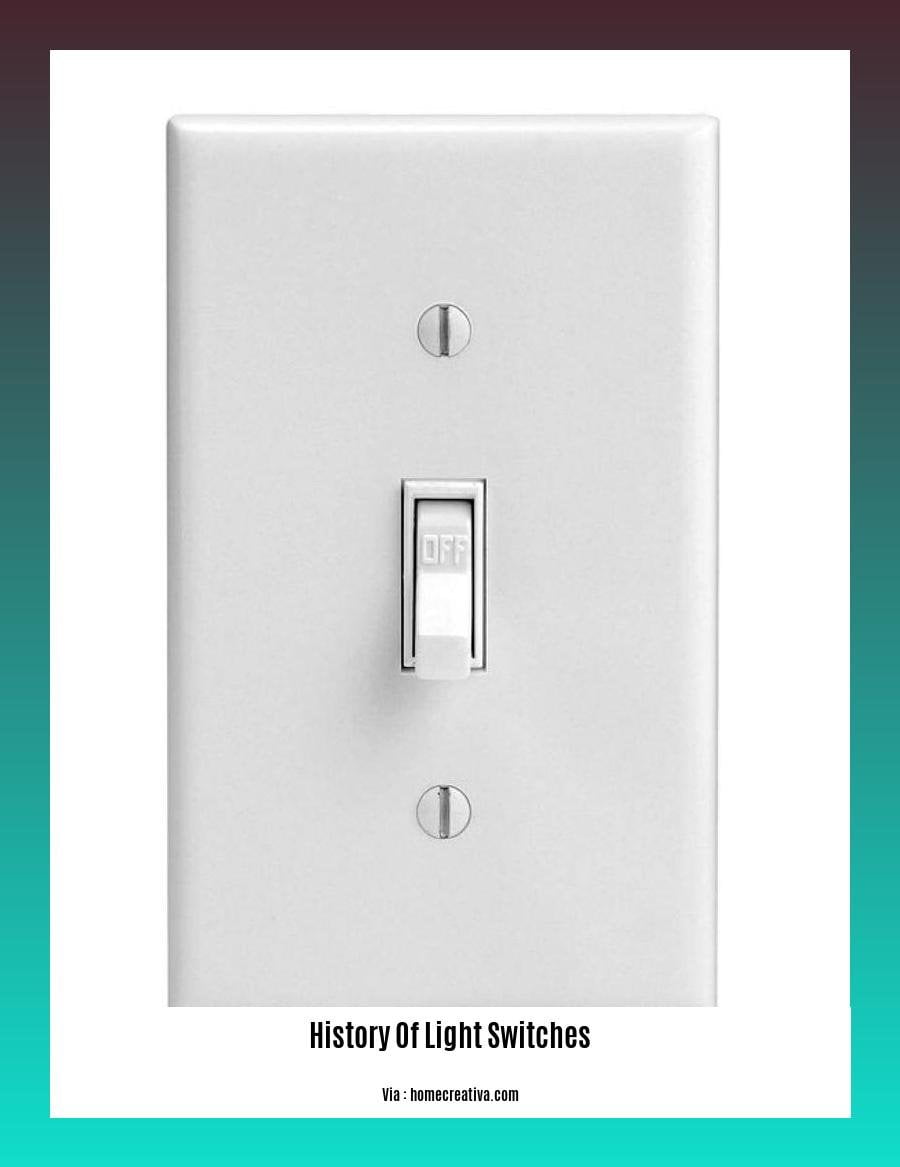In the realm of everyday conveniences, few devices have had as profound an impact as the light switch. From its humble beginnings in the 19th century to its current status as an indispensable part of our daily lives, the journey of this ubiquitous invention is a captivating tale that intertwines technological innovation, cultural shifts, and the quest for human mastery over darkness. Embark on a journey called [Flipping Through Time: Unraveling the History of Light Switches] to discover the fascinating stories behind this seemingly simple device that has shaped our modern world.
Key Takeaways:
- John Henry Holmes invented the first light switch that used a rapid-break technology to prevent arcing and sparking in Newcastle upon Tyne, England in 1884.
- William J. Newton and Morris Goldberg developed the modern toggle light switch in 1916, which became the standard in homes.
- Thomas Edison produced some of the earliest electrical switches in 1880 for his light displays.
History of Light Switches

Light switches, those ubiquitous yet often overlooked devices, have a rich and fascinating history that is intertwined with the development of electricity. From their humble beginnings as simple on/off mechanisms to the sophisticated smart switches of today, light switches have come a long way. Let’s delve into the journey of this indispensable part of our daily lives.
The Flickering Flame: Early Lighting Devices
Before the advent of electricity, people relied on candles, oil lamps, and gas lights to illuminate their homes and streets. These light sources required manual operation, either by lighting a match or turning a valve. The inconvenience of these methods sparked the quest for a more efficient and convenient way to control light.
The Dawn of Electric Light: Edison’s Contribution
In the late 19th century, Thomas Edison’s invention of the light bulb revolutionized the world of illumination. However, the challenge of turning these bulbs on and off remained. Edison’s initial solution was a simple pull-chain switch, which, while functional, was not very practical.
The Birth of the Modern Light Switch: John Henry Holmes
In 1884, a British inventor named John Henry Holmes made a breakthrough with the invention of the first rapid-break light switch. This switch employed a spring mechanism that quickly separated the switch contacts when turned off, preventing arcing and sparking. Holmes’s invention paved the way for the modern light switch.
Refining the Design: William J. Newton and Morris Goldberg
In 1916, William J. Newton and Morris Goldberg further refined the light switch design by developing the toggle switch, which became the standard in homes and businesses. The toggle switch featured a simple lever that could be flipped up or down to control the light.
The Rise of Smart Switches: A New Era of Convenience
In recent years, the advent of smart technology has brought about a new generation of light switches. These switches, often controlled by smartphones or voice assistants, offer a range of features such as dimming, scheduling, and remote control. Smart switches have brought unprecedented convenience and energy efficiency to our homes and offices.
Light switches have come a long way since their humble beginnings, evolving from simple mechanisms to sophisticated devices that enhance our lives. Through the ingenuity of inventors and engineers, the light switch has become an indispensable part of our modern world, a testament to the power of human innovation.
Explore the enthralling history of Little League Baseball and uncover the extraordinary journey of a sport that has captured the hearts of millions worldwide. history of little league baseball
Delve into the rich history of long hair, a captivating tale of cultural evolution and personal expression. Discover how this timeless trend has transcended generations, shaping fashion, identity, and societal norms. history of long hair
Discover the fascinating history of macrame, an ancient art form that has stood the test of time. Learn how this intricate knotting technique has transformed from a practical craft into a beloved decorative art, adding warmth and texture to homes and hearts alike. history of macrame
History Of Light Switches Wikipedia

Like most modern-day conveniences, the mastery of light switches was a gradual evolution. Without them, our modern world would be plunged into darkness. This simplest of tools has profoundly impacted our way of living.
In the beginning, fire was our only option. Our ancestors had to manage and put it out, a risky task.
The evolution of artificial lighting was a crucial step, but it demanded more than just light sources. We also required a means to control and manipulate it easily and safely.
Thomas Edison’s 1880 incandescent light bulb was a revolutionary moment. But it was just the beginning. We needed a way to turn this light on and off.
Edison’s first switches were basic contraptions. They consisted of a wooden block with a metal strip connected to a porcelain base. They required some muscle power to slide, but they were a significant improvement.
In the early 1900s, rotary switches came along. These were made of porcelain and featured a rotating knob to complete the circuit. More convenient and safer than Edison’s switches, they laid the foundation for modern switches.
In 1916, William J. Newton and Morris Goldberg invented the toggle switch. It consisted of a lever that flipped between two contacts, completing or interrupting the circuit.
The toggle switch was a game-changer. It was easy to use, safe, and could handle higher amperages, making it suitable for various applications. It quickly became the standard and essentially remained unchanged for over a century.
Modern switches are much more than on-off toggles. We have dimmer switches, motion-activated switches, timers, and smart switches. They offer convenience, energy efficiency, and automation like never before.
Key Takeaways
- Light switches have evolved from simple sliding switches to the sophisticated devices we know today.
- The invention of the toggle switch in 1916 was a pivotal moment in the history of light switches.
- Modern switches offer a wide range of features, including dimming, motion activation, timers, and smart controls.
- Light switches have transformed our lives by providing convenient and safe control over artificial lighting.
Relevant URL Sources:
- History of the Light Switch
- The Evolution of the Light Switch
History Of Light Switches Timeline
Delving into the history of light switches unveils a fascinating journey of innovation, convenience, and illumination. From humble beginnings to modern marvels, these ubiquitous devices have transformed our interaction with light and electricity. Join us as we trace the History Of Light Switches Timeline, exploring the key milestones and technological advancements that have shaped our everyday lighting experiences.
Key Takeaways:
Quick-Break Innovation: In 1884, John Henry Holmes revolutionized lighting with the invention of the first light switch utilizing quick-break technology, preventing arcing and sparking during operation.
Toggle Switch Dominance: In 1916, William J. Newton and Morris Goldberg introduced the modern toggle switch, which became the industry standard for its user-friendly design and ability to handle higher amperages.
Dimming and Automation Advancements: Modern light switches have evolved beyond simple on/off toggles, incorporating advanced features like dimming, motion activation, timers, and smart controls, offering greater convenience, energy efficiency, and automation.
The evolution of light switches mirrors our relentless pursuit of convenience, safety, and energy efficiency. From the initial sliding switches and rotary switches to the ubiquitous toggle switches and contemporary smart switches, these devices have come a long way in shaping our modern lighting experiences.
Sources:
- The History of Light Switches
- Timeline of Light Switch Inventions
FAQ
Q1: When was the first light switch invented, and who invented it?
A1: The first light switch employing a “quick-break” technology was invented in 1884 by John Henry Holmes, an English inventor, in Newcastle upon Tyne, England.
Q2: What was the purpose of inventing the light switch?
A2: The primary purpose of inventing the light switch was to provide a convenient and efficient way to control the flow of electricity to lights, allowing for easy switching on and off of lighting fixtures.
Q3: How does a light switch work?
A3: A light switch works by mechanically interrupting or completing an electrical circuit. When the switch is turned off, the circuit is broken, preventing the flow of electricity to the light fixture. Conversely, when the switch is turned on, the circuit is completed, allowing electricity to flow and illuminating the light.
Q4: What are some different types of light switches?
A4: There are various types of light switches available, including single switches, multiple switches, dimmer switches, outdoor switches, and weatherproof switches. Each type is designed for specific purposes and environments, offering different functionalities and features.
Q5: How have light switches evolved over time?
A5: Light switches have undergone significant evolution over the years. Early switches were made of porcelain and had a rotary design. As technology advanced, toggle switches made from durable materials like Bakelite and Ebonite became the standard. Modern light switches now incorporate various features such as dimmer controls, motion sensors, and smart home integration, enhancing their functionality and convenience.
- Unlock Filipino Culture: A Deep Dive into Traditions and Practices - April 23, 2025
- Unlock Spanish Culture: Insights & Opportunities Now - April 23, 2025
- White Spirit Uses & Substitutes: A Deep Dive for Pros & DIYers - April 23, 2025
















